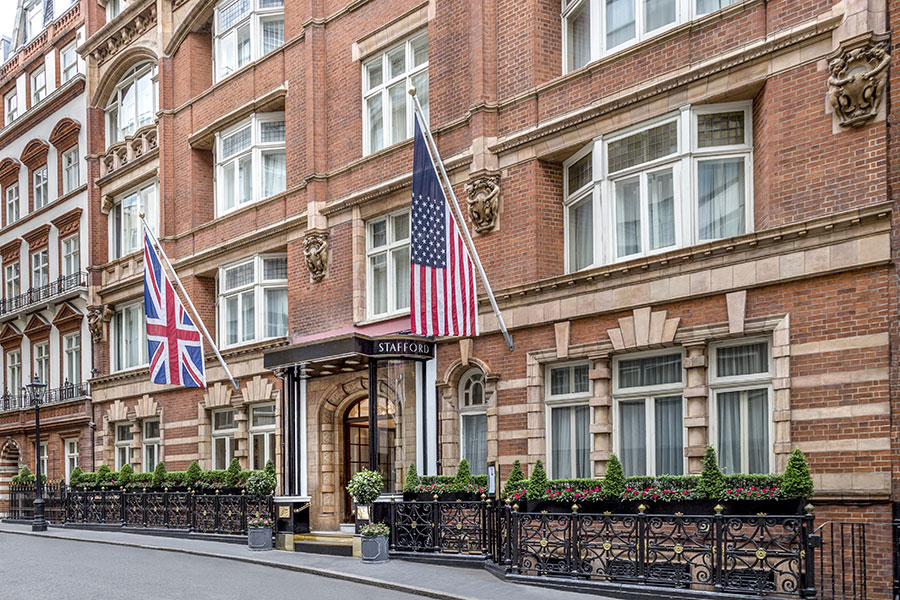
From the moment you step into The Stafford London, time has deepened rather than dulled the building’s elegance. Nestled discreetly between the whispering courtyards of St. James’s Place, the hotel is a living story of centuries past. From a private 17th‑century residence to a converted hotel in 1912, a wartime sanctuary during WWII, and a hideaway for dignitaries, the walls hum with history. With Michael Caines now guiding the culinary vision, the hotel’s gastronomic heart beats with renewed conviction.
Millennial was privileged to spend an evening voyaging through The Stafford London’s newest fine‑dining proposition. The evening unfolded as a carefully choreographed gastronomic ballet. Each course paired with wines that charted the cartography of flavor and terroir. The result was a narrative of origin, poise, and the promise of a new chapter in London’s hotel dining.
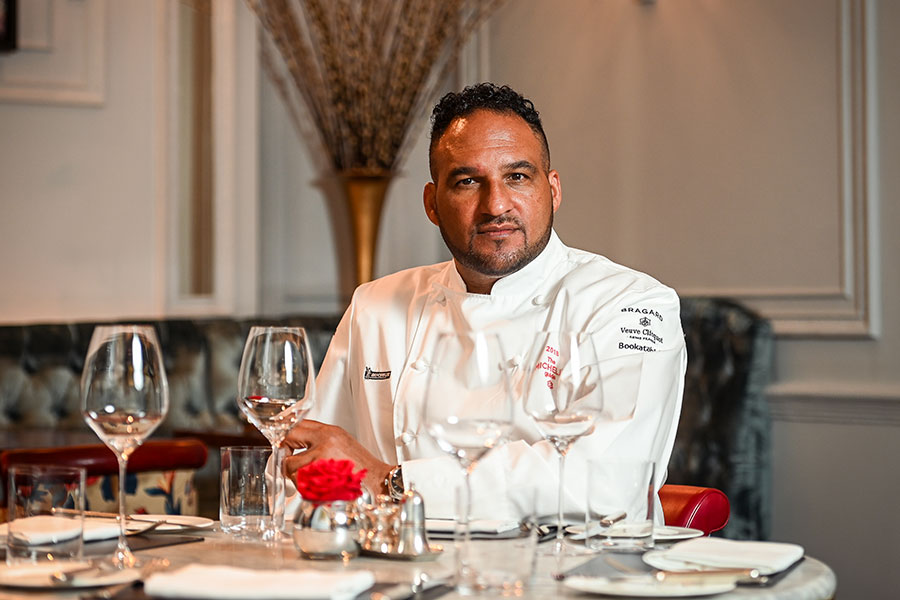
The Promise of Michael Caines & The Stafford’s Legacy
Michael Caines, a luminary among British chefs, arrives at The Stafford London bearing the weight (and promise) of decades of culinary laurels. As culinary strategist for the hotel, this marks his first London residency. At his helm is the same spirit that earned his Devon residence, Lympstone Manor, a Michelin star within months and a reputation for terroir-driven cuisine. In London, Caines blends his ethos of modern European cuisine with British seasonal integrity. His mandate is not to supersede the house’s legacy but to coauthor its next chapter.
Caines brings with him an illustrious pedigree shaped under culinary titans such as Raymond Blanc, Joël Robuchon, and Bernard Loiseau. In 2017, he founded Lympstone Manor, which achieved a Michelin star within six months of opening and has since earned five AA Rosettes and two Michelin Keys. He is also a regular on British television, known for appearances on Sunday Brunch, Great British Menu, and Cooking with the Stars. Beyond the kitchen, his Michael Caines Academy trains the next generation of Michelin-starred talent.
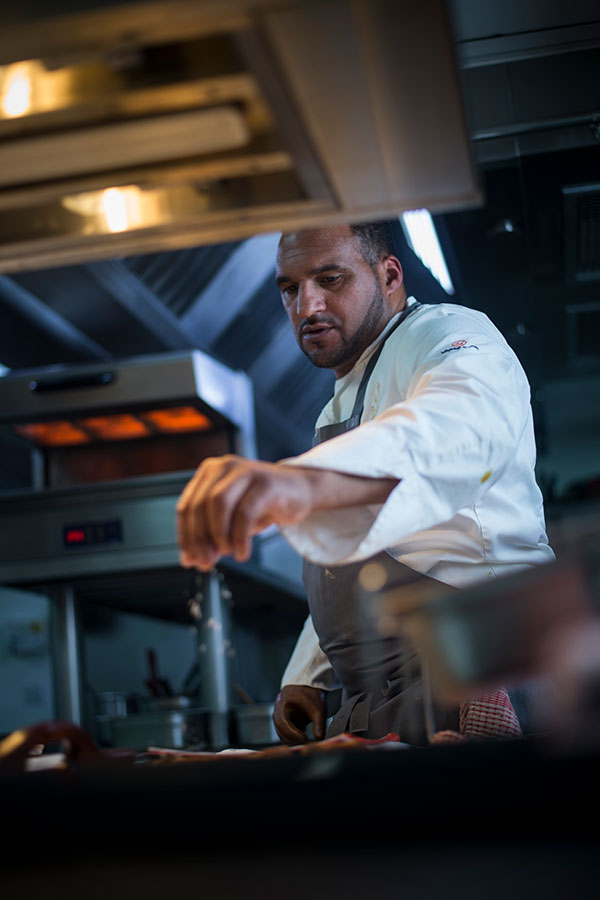
His culinary leadership at The Stafford is supported by Executive Head Chef Simon Ulph, who brings technical finesse from his time at Lympstone Manor, and Restaurant Manager Luca Gaeta, a 15-year veteran of The Stafford. Their collaboration ensures that the restaurant not only delivers on Caines’s vision but does so with a finesse that blends deep understanding of the hotel’s legacy with contemporary refinement.
For The Stafford, this partnership is a coup: a refined hotel in a storied quarter, now pairing its subtle glamour with culinary ambition. Its American Bar is one of the few original “American Bars” still operating in London, preserving a slice of 1920s/30s cocktail culture. With Caines now at its gastronomic core, The Stafford London stakes a claim not just as refined lodging but as a must‑dine destination.
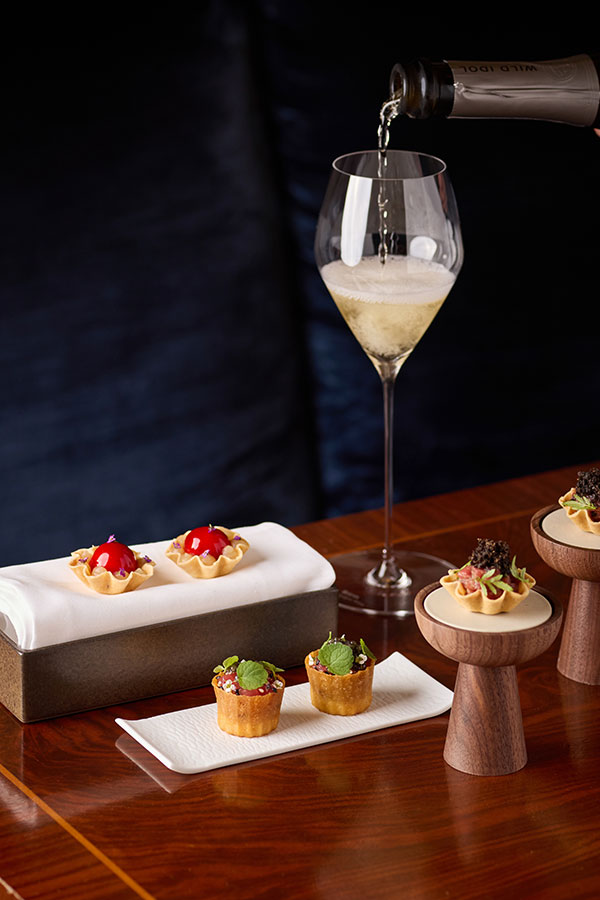
Course Progression: A Narrative in Pairings and Precision
Our evening’s culinary journey commenced with a flourish of refinement in the lounge, where two meticulously crafted canapés were paired with chilled champagne. First, a chicken foie gras tart arrived. Its richness lifted by a delicate tang, showcasing a masterclass in balance. Next, a warm gougère cheese ball, crowned with Parmesan, offered an umami-laced melt that lingered luxuriously on the tongue.
As we transitioned to the main dining room, our glasses were refreshed with a French 75 and Kir Royal. These spirited interludes marked a shift in tempo and setting, preparing the palate for the more elaborate offerings ahead.
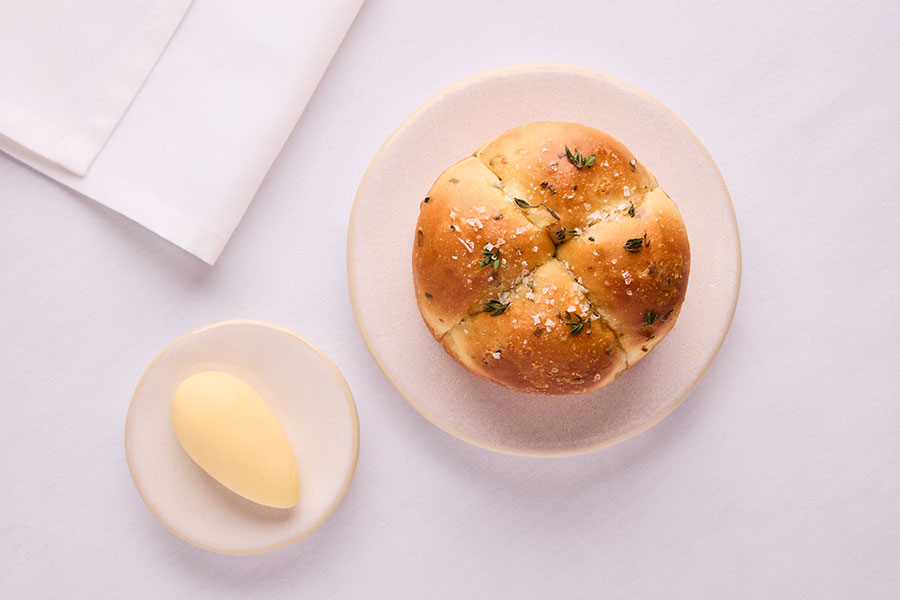
Piping hot Parker’s bread followed, smelling of onion, salt, and thyme. The crust crackled gently, and the butter melted upon contact. It was, without exaggeration, one of the finest breads ever offered to the table, and an overture that hinted at the kitchen’s rigor.
With the first official course, the sommelier began the wine pairings in earnest. A crisp, mineral-forward Douro Valley White, the Pequeno Dilema, Symington accompanied a delicate salmon and beetroot salad. This was the chef’s amuse wrapped in vibrant earthiness and oceanic freshness.
Immediately following was The Balvenie, a deconstructed smoked salmon tartine. Here, silken salmon met creamy horseradish, dill-laced cucumbers, and honey mustard, a chorus of textures and brightness elevated further by the structured acidity of the Douro white.
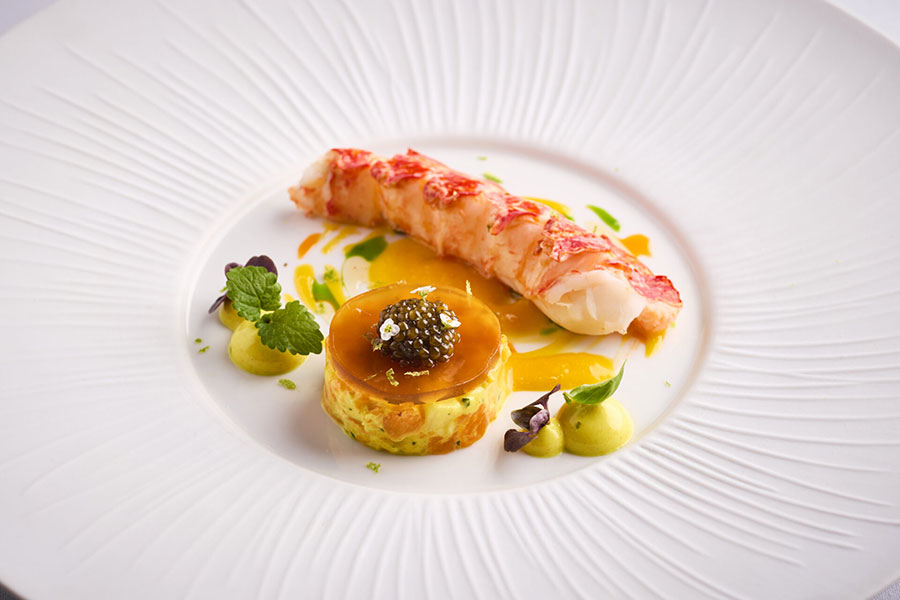
Next, an Austrian Riesling, the Domaine Zind-Humbrecht, Riesling Roche Granitique arrived to accompany the Warm Lobster Salad. A single, exquisitely cooked medallion of lobster sat in a citrus-scented mango vinaigrette.
As the meal deepened, the wine shifted to an elegant Langelois Kamptal Grüner Veltliner, paired with the confit duck. Succulent, slow-cooked, tender to the touch, this was an ode to a classic French technique.
Finally an opulent Italian red, the Amarone della Valpolicella Classico, Tommasi was chosen to stand against the richness of the main Beef Wellington with yellow carrots and truffle pomme purée.
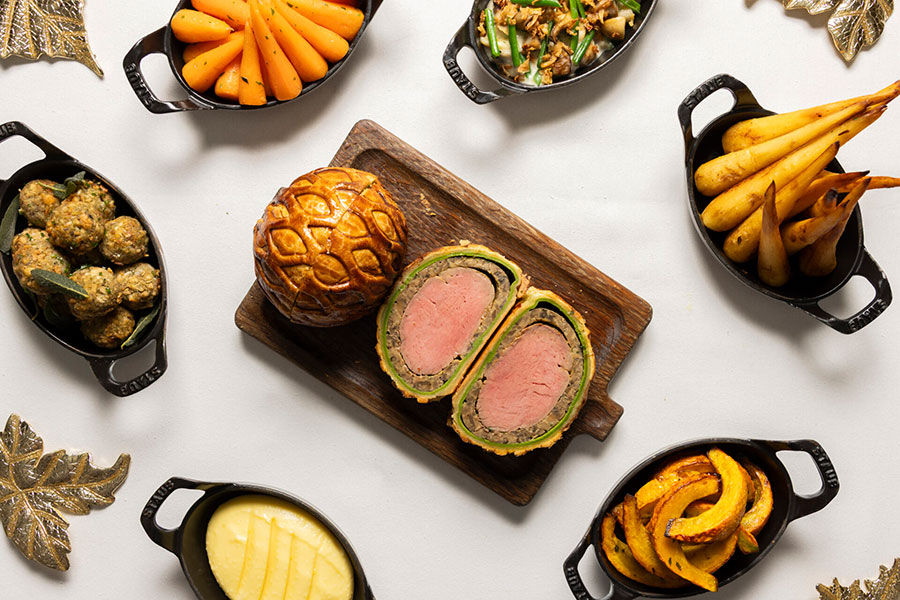
The Wellington was undeniably the star. Rosy beef wrapped in a pâté-lined puff pastry, its crown a silken avocado mousse, next to the hardy roasted carrots. Naturally, we had to try the truffle pomme purée. This course was earthy, buttery, and fully reminiscent of the Fall season.
The evening concluded with a pistachio soufflé, more custard than cloud, its nutty warmth and creamy center offering a dense, decadent finish. While not as airy as expected, it served as a gentle, contemplative close to an otherwise masterful composition.
Service, Atmosphere & Design
At Michael Caines, service moves with quiet confidence. Staff presented each dish with poise, avoiding overt showmanship while still guiding the diner through the architecture of the meal. Wine pours and transitions were seamless. The dining room itself marries classic London hotel elegance with modern restraint: muted tones, soft lighting, wood accents, and just enough flourish to keep attention.
Unlike other restaurants, conversation here is possible. The sound level is civil and the pacing measured. The opulence is in the cuisine, not in misapplied spectacle.
A notable detail: the restaurant prints its menus in house, adapting to ingredient seasonality and the day’s harvest. A true signal that this menu is ever-evolving.
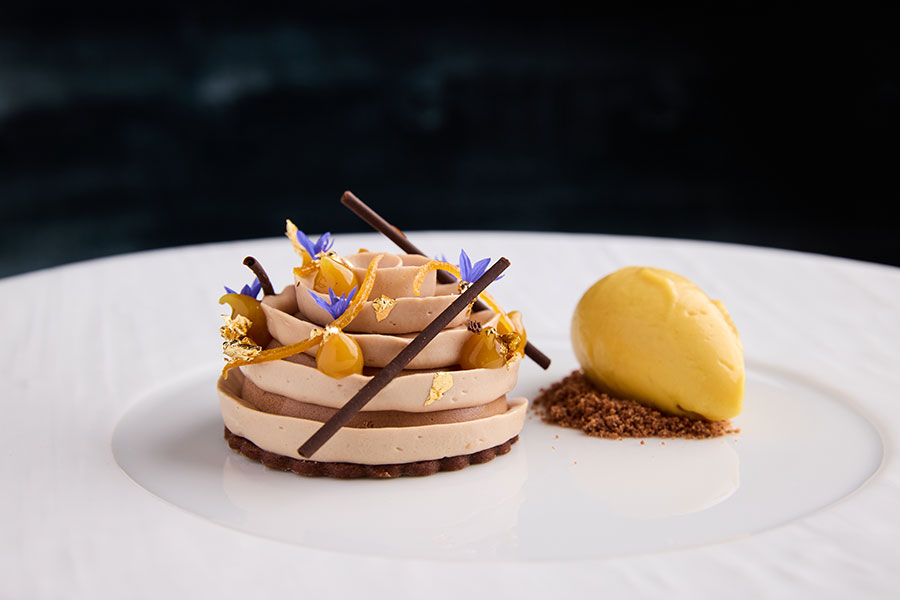
Why This Matters for Hotels in St. James London
Within a neighborhood defined by diplomatic rooms, noble embassies, and ceremonial facades, hotels in St. James London must balance elegant discretion with elite ambition. The Stafford is not the grandest, nor the flashiest, yet it claims a quiet edge. A rival to the traditional grande dames, The Stafford offers intimacy, history, and at last, gastronomic gravitas.
The presence of Michael Caines challenges the assumption that hotel dining must be subordinate to the room. Here, it speaks with refined volume.
Epilogue of Elegance at The Stafford London
Our night with Michael Caines at The Stafford, found a meal that felt entirely of its place: London refined, St. James’s discreet, The Stafford’s heritage intact and elevated. The interplay between bread and amuse, smoke and acidity, textural contrast and lushness, all suggest a kitchen in deep harmony with its chef’s vision.
From the first canapé to the final spoonful of pistachio cream, the experience confirmed that The Stafford London now merits serious attention not just as a luxury hotel but as an epicurean destination. Under Michael Caines’s direction, it doesn’t merely host fine dining, it embodies it.
FAQ
Q: Does Chef Michael Caines already have Michelin stars?
A: Yes, Michael Caines, himself, is a highly respected British chef whose earlier ventures (notably Lympstone Manor) earned Michelin recognition and a reputation for refined, ingredient-centric cuisine.
Q: Can one dine à la carte or only by tasting menu?
A: Yes, the restaurant offers both an à la carte menu and a signature tasting menu, alongside selections from the hotel’s “Classics” menu. However, the Signature Tasting Menu is stand alone and you cannot order from both the Tasting Menu and the Classic or A La Carte at the same time.
Q: What is the history of The Stafford’s American Bar?
A: The American Bar is one of the longest-surviving original American bars in London, rooted in the 1920s/30s cocktail tradition. It is known for classic cocktail craft, memorabilia, and a storied history including wartime heritage.
Q: Is The Stafford London itself historically significant?
A: Absolutely. The building’s origins trace back to the 17th century. Converted into a hotel by 1912, its wine cellars (some of the oldest in London) were used as air‑raid shelters in WWII.
Q: How would you rank this restaurant in London’s landscape?
A: It may not yet claim a Michelin star, but it stands among the most confident new hotel‑restaurant offerings in the capital. For diners seeking elegance with genuine culinary ambition, Michael Caines at The Stafford is now essential.
